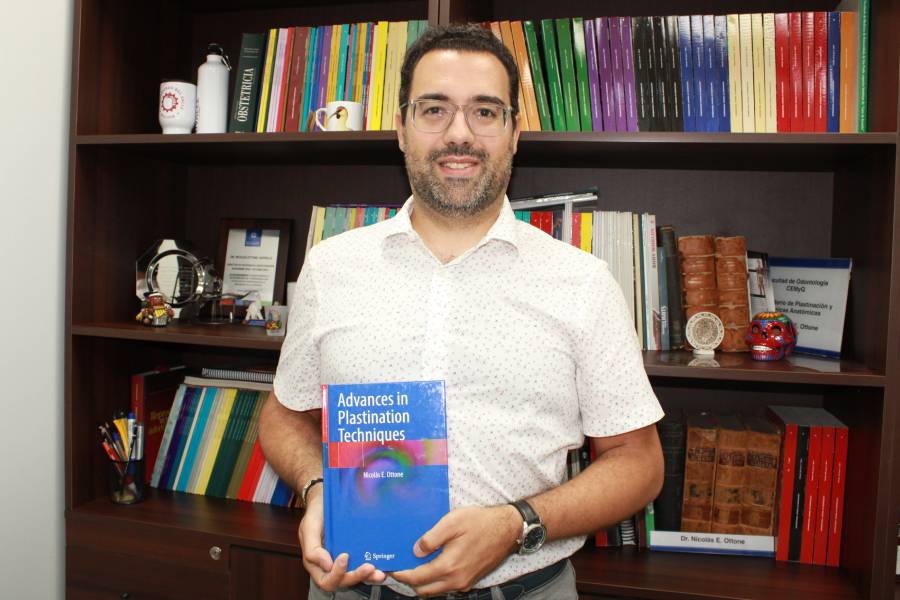|
This is the first-ever book on plastination techniques only, published by a publishing house. |
The outstanding professor and researcher Dr. Nicolás Ottone of the Faculty of Dentistry of Universidad de La Frontera (UFRO) made a significant contribution to the field of morphological sciences, by publishing the book “Advances in Plastination Techniques” through the prestigious Springer publishing house. Dr. Ottone is a medical doctor who has a PhD in Morphological Sciences and is the director of the Laboratory of Plastination and Anatomical Techniques of the Faculty of Dentistry and the Centre of Excellence on Morphological and Surgical Studies (CEMyQ) of Universidad de La Frontera. With great satisfaction and joy, after 17 years dedicated to this field, he was now able to publish his first book, which deals in its different chapters with topics such as the origins of anatomical techniques and plastination, the fundamentals on plastination and its different techniques, as well as aspects of biosafety and ethical considerations. This important contribution is the first-ever book on this issue. “There are no books published on plastination techniques. It is the first one worldwide. There are books on anatomical techniques, but they are published by scientific societies or individual authors and not by publishing houses, so this is the first book in the field of plastination,” Dr. Ottone explained. PLASTINATION TECHNIQUES According to Dr. Ottone, plastination allows the safe conservation of morphological and anatomical structures of human bodies, animals or other biological samples, being considered one of the most innovative techniques for the conservation of complete bodies, sections and organs, for use in teaching, research and outreach. The techniques can be used on large bodies, such as whales, elephants and complete human bodies, as well as on embryos, or small sections or organs, obtaining ultra-thin slices, thus covering from macro to micro-anatomical structures. “This book includes the explanation of each plastination technique, step by step, as well as their applications in anatomical teaching and research. In addition, some chapters describe the history of plastination and the origin of anatomical conservation techniques in general. Plastination is the most innovative technique for human and animal body conservation, but we also have other classic conservation techniques that have developed over time. Since the beginning, medical research was associated with the study of the human body, and the aim has always been to preserve it as long as possible, for being able to study it,” Dr. Ottone explained. “This technique also ensures that the specimen can be used for a long time. Currently, educational establishments have limited access to real human and animal bodies for anatomy and morphological sciences teaching, among others because of the rapid deterioration of bodies due to use and time. In this regard, plastination makes it possible to preserve morphological, anatomical, human and animal structures in a biosecure way and for an indefinite time, for teaching, research and outreach purposes. In addition, we also ensure the study of microanatomical and difficult to access structures,” he added. In his book, Dr. Nicolas Ottone also refers to the existing publications on plastination worldwide, to show what other researchers achieved. “That way,” he indicates, “we can see the advances or work carried out at other institutions and at Universidad de La Frontera”. Written by: Soledad Millapan Sandoval, Faculty of Dentistry |





